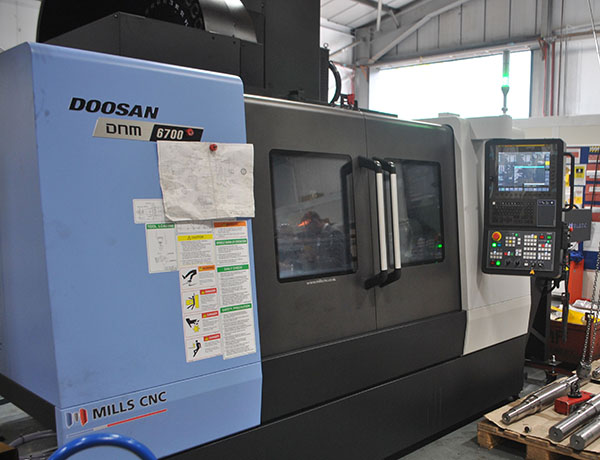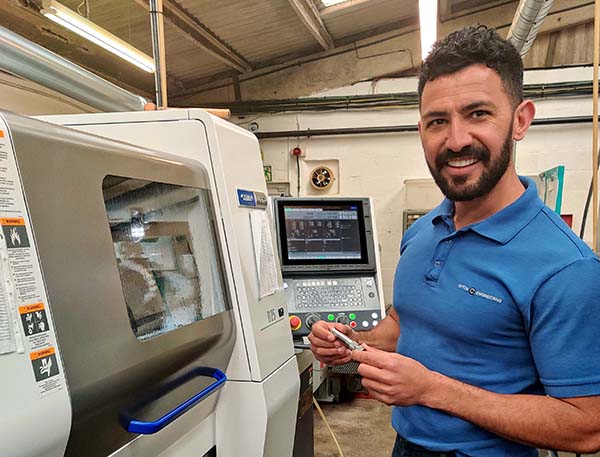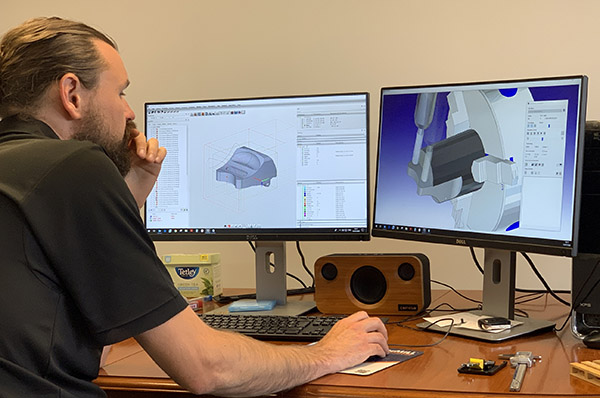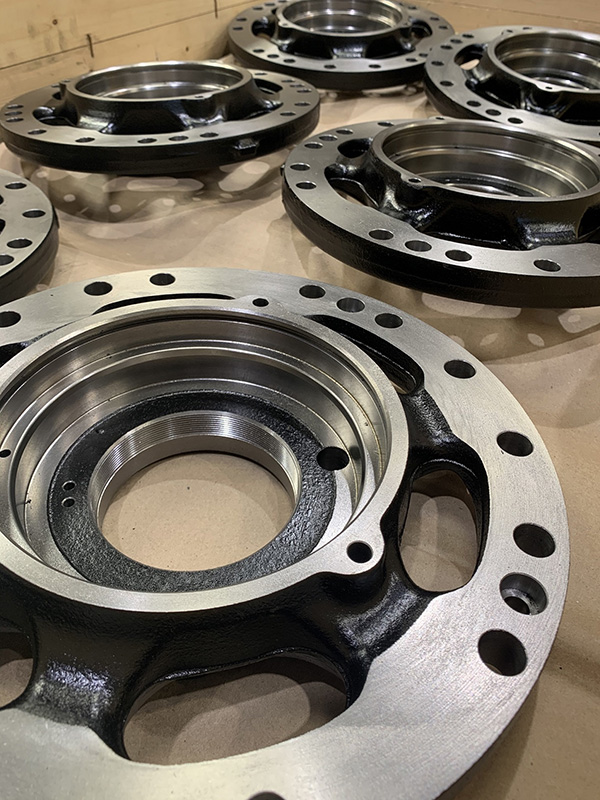
Mills CNC, the exclusive distributor of Doosan machine tools in the UK and Ireland, has recently supplied Coventry-based precision machining specialist, MNB Precision, with a large-capacity Doosan SMX 3100 multi-tasking machine and a Doosan DNM 6700 vertical machining centre. Installed at MNB’s 36,000 sq ft facility in May 2021, the machines’ arrival forms part of a larger technology investment package that, over the next seven months, will see MNB take ownership of four more Doosan machines (two lathes, a vertical machining centre and a mill-turn machine). By the end of the year, MNB will have 20 Doosan machines at its disposal, representing a sizeable proportion of the company’s 55 total machine tool resource.
Says commercial director Elliot Benton: “We are committed to continuous improvement and, as such, are no strangers to making strategic and prudent investments in advanced manufacturing and machining technologies. The sectors where we operate are ultra-competitive and the investments we make are intended to help us improve quality, productivity and operational efficiencies.”
Doosan’s SMX 3100 is a high-productivity multi-tasking machine equipped with a 12” chuck, a 30 kW/4000 rpm spindle, a B-axis milling spindle, a 40-tool magazine, a servo-driven tailstock, linear scales and the latest FANUC 31iB5 control. As part of the investment, Mills supplied the machine with an SLU-X4 steady rest, which in conjunction with the tailstock, enables the reliable and high-accuracy machining of long workpieces.
The SMX 3100 is the first Doosan turn-mill machine acquired by MNB, but the company is no stranger to the technology itself.
“Turn-mill technology enables us to machine complex, high-precision parts in one hit,” says Benton. “The technology can make jobs previously considered unprofitable, a more attractive proposition and helps significantly reduce job set-up and part cycle times. The investment in the SMX 3100 comes specifically from the need to machine high-precision oil and gas plug-type components. Manufactured from low-alloy steel, the parts are required in large volumes for a customer in Norway.

“The SMX 3100 is a powerful, flexible and accurate turn-mill machine,” states Benton. “The price and performance of the machine, its reputation in the market and the fact that it’s backed by Mills CNC’s aftersales service and support, made the investment decision a relatively straightforward one to make.”
Doosan’s DNM 6700 is a large-capacity vertical machining centre equipped with a 12,000 rpm directly-coupled spindle, a 30-position ATC, roller LM guideways, thermal compensation systems, and the latest Fanuc 0iMP control with the advanced iHMI touchscreen. To increase productivity and ensure machining flexibility, Mills supplied the DNM 6700 with an integrated four-/five-axis rotary table.
Says Benton: “We invested in a Doosan DNM 5700 vertical machining centre in 2017 and can vouch for the machine’s accuracy, speed and reliability. Our latest DNM 6700 provides us with a larger travels [1300 x 670 x 625 mm] and a bigger work table [1500 x 670 mm]. The DNM 6700 increases the machining capacity of i8 Ltd, a new, precision engineering subsidiary we created and absorbed into MNB in 2019 following the purchase of the assets of Integr8, a local engineering subcontractor. The machine was acquired to machine complex parts for a water treatment customer.”
MNB Precision and Mills CNC have a partnership that dates back to 2012 when the former invested in its first Doosan machine, a large-capacity Puma 800XL lathe. Since then MNB has regularly invested in Doosan lathes and machining centres from Mills.
“Doosan machine tools deliver best-in-class performance,” says Benton. “They are reliable and competitively priced.”
Established over 40 years ago MNB Precision, a family-owned business, is a provider of manufacturing and precision engineering services to a growing number of OEM and tier-one companies operating primarily, but not exclusively, in the oil and gas sector. Other industry sectors served by MNB Precision include power generation, rail, defence, nuclear and automotive.

The company manufactures a range of different-sized components, from handheld parts up to others that measure 11 m in length and 1 m in diameter, weighing up to 8 tonnes.
In addition to CNC turning and milling, MNB provides other in-house machining services that include jig boring, grinding and EDM. The company has impressive testing and inspection capabilities located in a temperature controlled environment and, to further differentiate itself in the market, offers customers a range of secondary services that include shot peening, NDT, magnetic particle inspection and liquid dye penetration. In the near future, MNB is considering further augmenting its services by opening up separate materials and surface treatment divisions.
Serving the oil and gas sector for four decades has meant that the company has experienced and survived a number of industry downturns. In response to the sector’s perennial volatility and to enable the company to have more control over its own destiny, MNB’s current leadership team has, over recent years, implemented a number of innovative and interrelated business strategies.
The company’s strategies are working. Sales turnover, prior to the pandemic, increased from £3.3m in 2016/17 to £20m in 2019/20. Such outstanding sales success has not gone unnoticed, with the company earning a number of recent and well-deserved accolades and awards. For instance, in 2020, MNB appeared 30th in the Sunday Times Virgin Atlantic Fast Track 100 league table of UK companies with the fastest-growing sales.
MNB’s recently introduced business strategies, across all of its operations, have been transformative. These include the adoption of a ‘servitisation’ business model, proactive and aggressive sales, and diversification.
In summary, MNB Precision is clearly a manufacturing company that thinks outside, and inside, the box.
Recent and future investment in advanced machine tool technologies combined with its servitisation business approach has helped, and will help, the company compete and win more work in the oil and gas sector which, independent forecasters have predicted will bounce back strongly in the second half of 2021.
MNB’s more proactive and targeted sales strategies are driving demand for its services, and the creation of a manufacturing facility in Saudi Arabia will put the company in the box seat in one of its primary markets. Furthermore, MNB’s move into other sectors and the recent creation of i8 Ltd, are further evidence of its forward-looking and focused business approach.
All three strategies rely on MNB having access to class-leading, high-performance machine tools, which is why the company continues to invest in Doosan machines from Mills CNC.
For further information
www.millscnc.co.uk




































